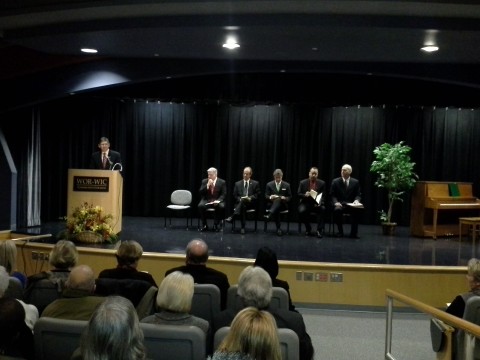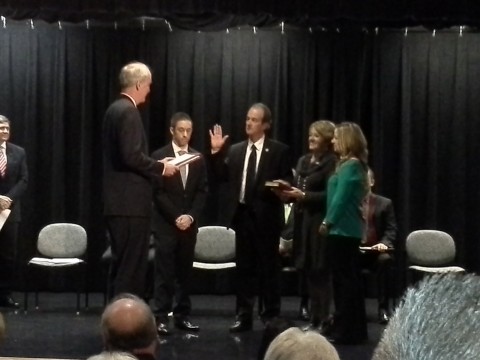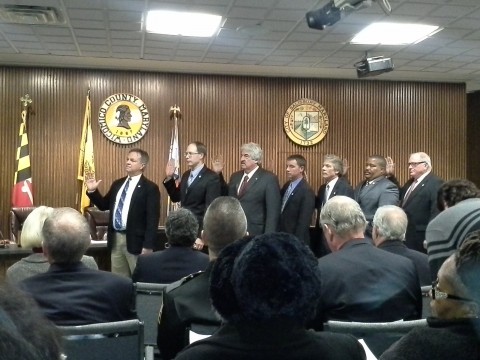By Cathy Keim and Michael Swartz
The twin byline is present because Cathy came to me with her thoughts on these bills, writing up a post quoting Delegate Parrott at some length along with some of her thoughts. I liked the direction of the piece, but thought I could add more and she was amenable to the changes. So here you go.
Recently Delegate Neil Parrott sent out a newsletter that had some information about two “shockingly bad bills” that are about to pass in the General Assembly. We had both heard from Robert Broadus with Protect Marriage Maryland about the first bill, but Delegate Parrott alerted us both to the second bill. Both have more or less passed under the radar in a session which has focused more on the budget, gubernatorial appointments, and environmental regulations.
In his message to constituents and other interested observers, Delegate Parrott stated:
Two shockingly-bad bills…are on their way to passing.
(snip)
HB 838/SB 416 is going to cause your health insurance rates to go up, when Maryland already has some of the highest health insurance premiums in the nation. This bill forces Maryland insurance companies to cover the cost of expensive In-Vitro Fertilization (IVF) treatments ($12,500 each time) for same-sex married couples.
Our high insurance costs in Maryland are primarily due to the great number of insurance mandate laws already in effect, and this new bill will simply make the problem worse. Governor Hogan and I both support leading Maryland towards more fiscally-responsible laws and policies, and the voters overwhelmingly agreed in the last election. However, the majority of Delegates and Senators still voted to create more complex and unnecessary insurance mandates in our flawed health system.
(snip)
Under current Maryland law, a husband and wife must donate their own sperm and egg to be eligible to receive insurance benefits for IVF treatments. If the couple requires a donation of an egg or sperm, IVF treatments would not be covered under current Maryland law. Under this new law, a same-sex couple would obviously need to get a sperm donor to have a child. This is a very unequal situation.
Same-sex couples have been allowed to adopt or have children, but many studies have been done that confirm that children born into a family with a mother and a father do the best in all measures – economic, social, educational, and emotional. Not only does this law create an unequal and less-stringent requirement for same-sex couples, but our insurance premiums will also be paying to have a child brought into the world to a situation where they will most likely be statistically worse off than other children. By passing this law, we are intentionally putting a child into a “family” where a father will knowingly be absent.
This sort of social engineering and fiscally-irresponsible law-making, solely for the pleasure of adults without any regard for the children that will grow up in these situations, is reprehensible. What homosexuals cannot do naturally, the General Assembly has now mandated must be provided by all insurance plans, creating a false sense of equality, with little to no regard for the children who will be negatively affected.
This leads to the concern of what could come next if this bill is passed. Will the General Assembly pass a mandate requiring insurance companies to cover the costs of hiring a surrogate to carry the child for male, same-sex marriages? (Emphasis in original.)
As Cathy wrote Sunday, our culture is under attack to redefine and destroy every institution that has sustained us as a nation since our founding. Marriage and our families are worth defending. The progressives only exist to tear down. We are the ones that believe in ideals that are true and good and have stood the test of time. When this country is a faint memory, the family will still exist. They may destroy our culture, but they cannot destroy truth. The family is the basic building block of society. Despite the malice and ridicule heaped upon the traditional family with a father, mother and children living and growing together in love, the family will still survive.
Delegate Parrott has made the case, as Cathy has before, that children do best when raised in a home with a married mother and father. Why should the state pay to circumvent this?
Senator Jim Mathias and Delegate Sheree Sample-Hughes both voted for this bill. When somebody says the Eastern Shore is conservative, just remember to check how Senator Mathias and Delegate Sample-Hughes vote.
The second bill that Delegate Parrott wrote about was HB862/SB743, which as Delegate Parrott notes:
…allows people to rewrite history. It would allow someone who gets a note from their doctor saying they are transitioning from male to female or from female to male to literally change the gender on their birth certificate. The new birth certificate would not even indicate that it has been “Amended,” as is the case when an individual decides to legally change their name. The change would not require that the individual has had a sex-change operation, but just relies on hormone therapy and how the person feels at the time. The change caused many of the legislators who work in law enforcement to question how they could even solve crimes given these false records. For example, suppose they are looking for the DNA of a male, but all they have is a female suspect.
Changing factual birth records without leaving a record of the change could have significant and harmful consequences for our society and is simply irresponsible policy.
Senator Mathias also voted for this bill as did Delegates Carl Anderton, Jr. and Sample-Hughes. Needless to say, we’re both disappointed with Delegate Anderton’s vote as he represents us in Annapolis. We would have expected this out of his predecessor, but Carl was supposed to be different.
At this point in time these bills are on their final step to passage, and it seems like the skids are being greased as the House versions of the Senate bills are passing without any amendments – this is important because no conference would be necessary.
Yet besides the many objections Delegate Parrott raised, both bills also raise a number of ethical questions about child rearing. Regardless of who has to pay for in vitro fertilization, there’s also the ongoing concern about the rights of the third party which needs to be involved with any same-sex attempt at creating progeny – either the surrogate mother for a gay couple or the sperm donor for the lesbian pair.
And much like the Hobby Lobby situation with abortifacient drugs, there’s a legitimate question of whether a religiously conscientious business should be forced to cover this procedure since it involves two partners of the same gender. It’s a situation which becomes quite complicated and I feel this is needlessly so.
As for the birth certificate bill, it would be more palatable if there was a notation of amendment. A law such as this may open the door to parents who are trying to raise a child as if it were the opposite gender (such as this recent case) to amend his or her birth certificate as a minor.
We believe that gender is not a mistake, nor was it an error that a person of each gender was required to create a new life. Even with in vitro fertilization, there’s no escaping the need for a male to do his part and a female to be the willing host for the embryo.
While there is an element of humanity in the selection of gender, I think I speak for Cathy when I say we believe that it was our Creator who made the ultimate decision as to whether we were male or female. Taking hormones, undergoing genital mutilation surgery, and identifying as someone of the opposite gender doesn’t change the fact one was born with the chromosomes and genitalia of a particular gender in all but a few extremely rare cases. It’s what the birth certificate should reflect.
However, it’s likely these bills will pass the General Assembly, so we call on Governor Hogan to use his veto pen on these ill-considered measures. And it’s all but certain these votes will be among those I use for the monoblogue Accountability Project later this spring.








 Most newspapers will use their Sunday edition before the election to either make the most key endorsement, such as for governor or president, or summarize their endorsements into a ballot guide for voters.
Most newspapers will use their Sunday edition before the election to either make the most key endorsement, such as for governor or president, or summarize their endorsements into a ballot guide for voters.
